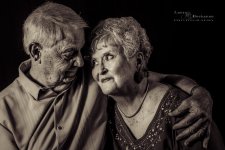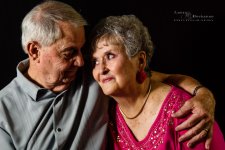lkbuchanan
New member
Hi there!
This was my 1st shoot using off camera flash in a studio. It was a 60th anniversary of this couple. I like the black & white version much better but have never really worked with b&w or off camera flash. Not sure what to do with/ how to edit the color pics either. Also I am a new to photographing people and post processing them. Any feedback is much appreciated.


This was my 1st shoot using off camera flash in a studio. It was a 60th anniversary of this couple. I like the black & white version much better but have never really worked with b&w or off camera flash. Not sure what to do with/ how to edit the color pics either. Also I am a new to photographing people and post processing them. Any feedback is much appreciated.



